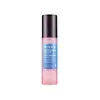What's inside
What's inside
 Key Ingredients
Key Ingredients

 Benefits
Benefits

 Concerns
Concerns

 Ingredients Side-by-side
Ingredients Side-by-side

Water
Skin ConditioningSodium Hyaluronate
HumectantCopper Tripeptide-1
Skin ConditioningButylene Glycol
HumectantSclerotium Gum
Emulsion StabilisingOctanediol
Ethylhexylglycerin
Skin ConditioningTropolone
Skin ConditioningHydrogenated Polydecene
EmollientCaprylic/Capric Glycerides
EmollientHydrogenated Lecithin
EmulsifyingStearic Acid
CleansingC12-20 Alkyl Glucoside
EmulsifyingC14-22 Alcohols
Emulsion StabilisingGlyceryl Stearate
EmollientPEG-100 Stearate
Cholesteryl Hydroxystearate
EmollientCholesterol
EmollientCeramide 3
Skin ConditioningTriethanolamine
BufferingCarbomer
Emulsion StabilisingBetula Platyphylla Japonica Juice
Skin ConditioningPortulaca Oleracea Extract
Skin ConditioningScutellaria Baicalensis Root Extract
AstringentAstragalus Membranaceus Extract
AntioxidantArnica Montana Flower Extract
MaskingArtemisia Absinthium Extract
Skin ConditioningAchillea Millefolium Extract
CleansingGentiana Lutea Root Extract
Skin ConditioningRubus Idaeus Fruit Extract
AstringentBeta-Glucan
Skin ConditioningAdenosine
Skin ConditioningDisodium EDTA
Water, Sodium Hyaluronate, Copper Tripeptide-1, Butylene Glycol, Sclerotium Gum, Octanediol, Ethylhexylglycerin, Tropolone, Hydrogenated Polydecene, Caprylic/Capric Glycerides, Hydrogenated Lecithin, Stearic Acid, C12-20 Alkyl Glucoside, C14-22 Alcohols, Glyceryl Stearate, PEG-100 Stearate, Cholesteryl Hydroxystearate, Cholesterol, Ceramide 3, Triethanolamine, Carbomer, Betula Platyphylla Japonica Juice, Portulaca Oleracea Extract, Scutellaria Baicalensis Root Extract, Astragalus Membranaceus Extract, Arnica Montana Flower Extract, Artemisia Absinthium Extract, Achillea Millefolium Extract, Gentiana Lutea Root Extract, Rubus Idaeus Fruit Extract, Beta-Glucan, Adenosine, Disodium EDTA
Water
Skin ConditioningButylene Glycol
HumectantHexanediol
SolventGlycerin
HumectantMethyl Gluceth-20
HumectantPEG-18
HumectantDimethyl Ether
SolventSilanetriol
PEG-60
HumectantHydrogenated Castor Oil
EmollientCarbomer
Emulsion StabilisingPhenyl Trimethicone
Skin ConditioningPotassium Hydroxide
BufferingCellulose Gum
Emulsion StabilisingTrehalose
HumectantCeramide 3
Skin ConditioningPolyglyceryl-10 Stearate
Skin ConditioningHydrogenated Lecithin
EmulsifyingSucrose
HumectantAdenosine
Skin ConditioningHydrolyzed Hyaluronic Acid
HumectantPanthenol
Skin ConditioningPropylene Glycol
HumectantRubus Idaeus Fruit Extract
AstringentCarica Papaya Fruit
Skin ConditioningPinus Densiflora Extract
AntioxidantBetaine
HumectantHydrolyzed Extensin
Skin ConditioningBiosaccharide Gum-1
HumectantSqualane
EmollientOlea Europaea Fruit Oil
MaskingCaprylic/Capric Triglyceride
MaskingMoringa Oleifera Seed Oil
EmollientCitrus Aurantium Bergamia Fruit Oil
MaskingPelargonium Graveolens Flower Oil
MaskingRosa Damascena Flower Oil
MaskingWater, Butylene Glycol, Hexanediol, Glycerin, Methyl Gluceth-20, PEG-18, Dimethyl Ether, Silanetriol, PEG-60, Hydrogenated Castor Oil, Carbomer, Phenyl Trimethicone, Potassium Hydroxide, Cellulose Gum, Trehalose, Ceramide 3, Polyglyceryl-10 Stearate, Hydrogenated Lecithin, Sucrose, Adenosine, Hydrolyzed Hyaluronic Acid, Panthenol, Propylene Glycol, Rubus Idaeus Fruit Extract, Carica Papaya Fruit, Pinus Densiflora Extract, Betaine, Hydrolyzed Extensin, Biosaccharide Gum-1, Squalane, Olea Europaea Fruit Oil, Caprylic/Capric Triglyceride, Moringa Oleifera Seed Oil, Citrus Aurantium Bergamia Fruit Oil, Pelargonium Graveolens Flower Oil, Rosa Damascena Flower Oil
Ingredients Explained
These ingredients are found in both products.
Ingredients higher up in an ingredient list are typically present in a larger amount.
Adenosine is in every living organism. It is one of four components in nucleic acids that helps store our DNA.
Adenosine has many benefits when used. These benefits include hydrating the skin, smoothing skin, and reducing wrinkles. Once applied, adenosine increases collagen production. It also helps with improving firmness and tissue repair.
Studies have found adenosine may also help with wound healing.
In skincare products, Adenosine is usually derived from yeast.
Learn more about AdenosineButylene Glycol (or BG) is used within cosmetic products for a few different reasons:
Overall, Butylene Glycol is a safe and well-rounded ingredient that works well with other ingredients.
Though this ingredient works well with most skin types, some people with sensitive skin may experience a reaction such as allergic rashes, closed comedones, or itchiness.
Learn more about Butylene GlycolCarbomer is a polymer of acrylic acid. Its main role is to create a gel consistency.
A high amount of carbomer can cause pilling or balling up of products. Don't worry, most products contain 1% or less of carbomer.
Ceramide 3 is a form of ceramide and now goes by Ceramide NP.
Ceramides are intercellular lipids naturally found in our skin that bonds dead skin cells together to create a barrier. They are known for their ability to hold water and thus are a great ingredient for dry skin.
Using ceramides in your skincare routine can help reinforce your skin barrier by helping the skin stay hydrated.
If you would like to eat ceramides, sweet potatoes contain a small amount.
Read more about other common types of ceramides here:
Ceramide AP
Ceramide EOP
Hydrogenated Lecithin is created from the hydrogenation of lecithin (a group of phospholipids). Hydrogenation is a chemical reaction between hydrogen and another element.
This ingredient is an emollient and emulsifier. As an emollient, it helps soften skin by trapping moisture within. As an emulsifier, it prevents oil and water ingredients from separating.
We don't have a description for Rubus Idaeus Fruit Extract yet.
Water. It's the most common cosmetic ingredient of all. You'll usually see it at the top of ingredient lists, meaning that it makes up the largest part of the product.
So why is it so popular? Water most often acts as a solvent - this means that it helps dissolve other ingredients into the formulation.
You'll also recognize water as that liquid we all need to stay alive. If you see this, drink a glass of water. Stay hydrated!
Learn more about Water